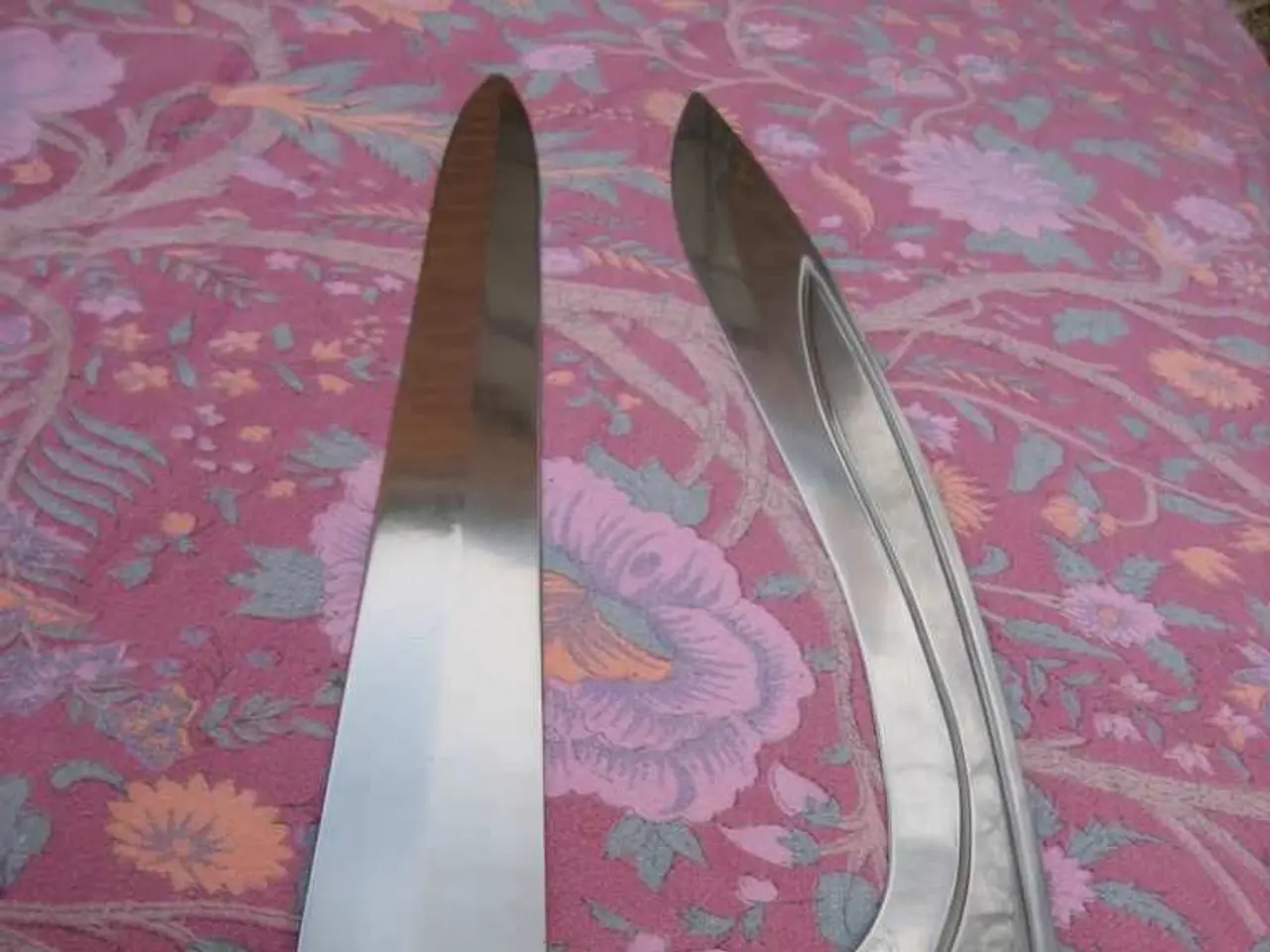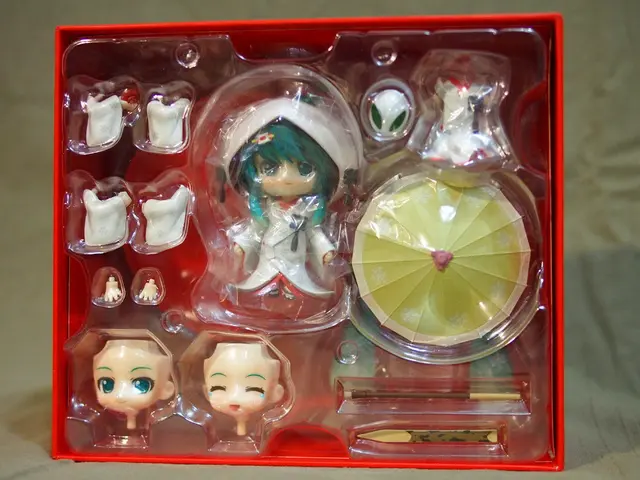Crafted Through Legacy: Honoring Tradition in Steelwork
The samurai sword, a symbol of Japan's rich history and cultural identity, continues to captivate audiences as it transitions from the battlefield to pop culture icons. The latest exhibition, NEO-JAPONISM | SAMURAI & BEYOND, offers visitors a rare opportunity to delve into the fascinating world of samurai weaponry, showcasing a blend of practicality, artistry, and cultural significance.
Originating from early iron swords introduced from China around the 4th century, the samurai sword's journey is a testament to Japan's artistic evolution. By the Heian period (794–1185), curved swords emerged, paving the way for the iconic samurai blades. The *tantō*, a small dagger from the Heian period, served as a practical weapon but gradually became increasingly ornate, symbolizing status as well as utility.
The *katana*, Japan’s most famous samurai sword, evolved during the Kamakura period (1185–1333) from straight swords known as *chokutō*. Its curved blade design was tactical, allowing faster drawing and effective slashing, especially on horseback. This shape became a symbol of the samurai’s soul, discipline, and honor, with forging considered a sacred process.
The pairing of the *katana* with shorter blades like the *wakizashi* replaced earlier weapons such as the *tantō* and *tachi*, especially through the peaceful Edo period when weapon design emphasized artistry over battlefield utility. Samurai swords were not merely weapons but spiritual and cultural icons. The forging of these blades involved rituals, reflecting the warrior’s identity and societal role.
The blade’s quality and decoration often indicated the owner's rank and aesthetic sensibility. Swordsmanship arts like *kenjutsu*, developed by the samurai class, codified the techniques and philosophies surrounding these swords. These martial traditions persisted even as Japan transitioned through various political eras, preserving the cultural heritage of samurai weaponry.
The Meiji Restoration (1868–1912) dramatically altered this landscape. The Sword Abolishment Edict of 1876 prohibited samurai and civilians from carrying swords publicly, signaling the end of the samurai era. Many swordsmiths adapted by turning toward crafting knives and tools, which led to a renaissance in Japanese blade craftsmanship beyond warfare, particularly in kitchen knives.
The NEO-JAPONISM | SAMURAI & BEYOND exhibition offers a unique opportunity to see these historic items up close. The extension features an array of samurai weaponry, including a katana, wakizashi, and naginata. The kabuto (helmet) on display showcases maedate and menpō, showcasing the evolution of armor in response to hand weapons and firearms.
In addition to authentic blades and helmets, the exhibition includes a collection of koshirae, tsuba, kozuka, and menuki, showcasing detailed artistry and forward-thinking design. NHK's digital technologies are employed to provide close-up access to samurai era art and artifacts, offering a captivating and immersive experience.
The samurai sword carries significant cultural weight in Japan's history and culture. Each weapon represents more than a mere instrument of war; it is a fusion of practical engineering, artistic mastery, and cultural significance. The extension offers guests a chance to marvel at the intricate beauty of these historic items, which defy their age of up to 500 years. The samurai sword remains a constant companion to Japan's samurai, evolving from a tool of war to a pop culture icon, embodying the spirit, honor, and craftsmanship of feudal Japan.
- The artistic evolution of Japan is highlighted by the journey of the samurai sword, originally introduced from China in the 4th century.
- During the Heian period (794–1185), the tantō, a small dagger, transformed from a practical weapon to an ornate symbol of status and utility.
- The katana, Japan's most famous samurai sword, evolved from straight swords (chokutō) during the Kamakura period (1185–1333), and became a symbol of the samurai’s soul, discipline, and honor.
- As the Edo period (1603–1868) embraced peace, samurai swords shifted focus from battlefield utility to artistry, with many examples representing the owner's rank and aesthetic sensibility.
- Modern technology is integrated into the NEO-JAPONISM | SAMURAI & BEYOND exhibition, allowing visitors to get a close-up look at samurai era art and artifacts through NHK's digital technologies, immersing them in the captivating details of these historic items.
- The fusion of practical engineering, artistic mastery, and cultural significance found in samurai swords continues to captivate audiences today, as they transition from battlefield icons to cherished pieces in art, fashion-and-beauty, home-and-garden, and technology collections.




